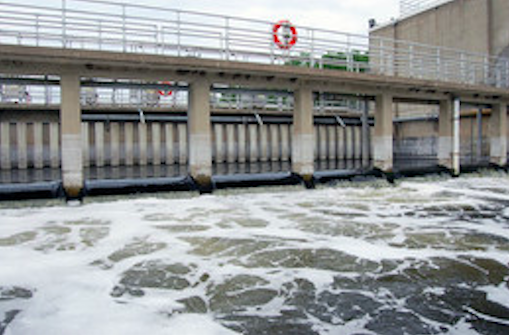Amid the pandemic, the University of Minnesota Genomics Center (UMGC) and the Metro wastewater treatment plant in St. Paul have been working together to test wastewater for COVID-19 to predict trends for the Twin Cities area.
Monitoring the presence of COVID-19 in wastewater allows public health experts to know what geographic locations will have a high number of cases, without testing mass groups of people. Although there are still new cases emerging, the data predicted a decline in omicron cases by the week of Feb. 6 according to Kat Dodge, a spokesperson from the Medical School.
The omicron variant was first observed in the wastewater in mid-December. During the peak of omicron cases in early January, 1,047 million copies of COVID-19 gene fragments came into the plant each day. By the end of January, this number decreased to 133 million gene fragments a day, according to Dr. Steve Balogh, a research scientist in the Metropolitan Council’s Environmental Services division.
While this number has decreased, the concentration of COVID-19 in wastewater is still considered high. The lowest recorded concentration from the pandemic was 6.9 million copies of gene fragments in June 2021.
“People are still getting sick, and it’s not over, there are still hospitalizations,” Balogh said. “In our viral load, it’s still very high, even though it’s about 90% lower than it was 4 weeks ago.”
Researchers, like Balogh, test wastewater at the plant in St. Paul, which serves the majority of the Twin Cities area. The samples are taken from untreated wastewater from toilets, shower drains, factories and stores.
Wastewater sampling, unlike tracking COVID-19 through testing, allows researchers to see the prevalence of the virus in geographic communities rapidly. Wastewater testing does not rely on people getting tested or receiving results to understand how COVID-19 is spreading through an area, according to Balogh.
“Wastewater testing gives us objective data about the prevalence of the virus in the community,” Balogh said. “It’s not determined by how many people are taking a test or who is symptomatic or asymptomatic.”
To test for COVID-19, Balogh extracts RNA segments from wastewater samples. The samples taken at Balogh’s lab are then sent to the University’s Genomic Center, where they test for the concentration of viral COVID-19 fragments within 48 hours of being collected.
“Almost a year ago, we developed mutation-specific droplet digital PCR,” said Kenneth Beckman, director of the University’s Genomics Center. “It allows us to provide a measurement of specific strains, which has helped the Metropolitan Council to track the rise and fall of new COVID variants.”
Wastewater testing for COVID-19 in the Twin Cities area began in April 2020. Eventually, researchers partnered with the University Genomics Center to begin analyzing samples in July 2021. By October, Balogh developed a method for extracting RNA and sending it to the University’s Genomic Center to receive data in return, according to Beckman.
Public health experts have become interested in analyzing wastewater data, due to the COVID-19 testing data potentially being inaccurate, Balogh said.
“My goal is to try to provide useful information to the Department of Health, as they are trying to manage the pandemic in our communities,” Balogh said. “They are looking at the data and valuing it, there is an enormous amount of information in wastewater and it’s a great measure of the health of the people.”













